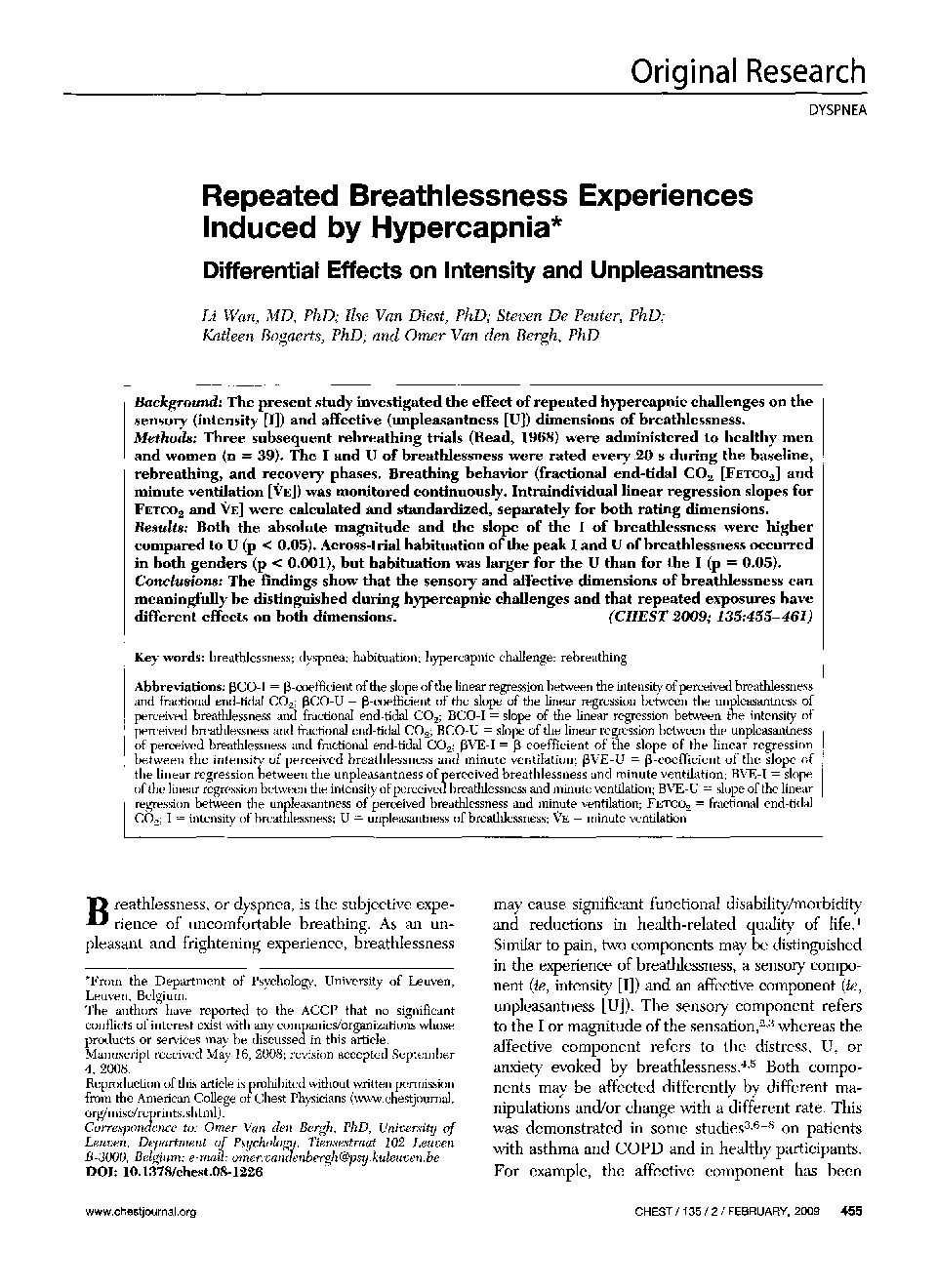| Article ID | Journal | Published Year | Pages | File Type |
|---|---|---|---|---|
| 2902264 | Chest | 2009 | 7 Pages |
BackgroundThe present study investigated the effect of repeated hypercapnic challenges on the sensory (intensity [I]) and affective (unpleasantness [U]) dimensions of breathlessness.MethodsThree subsequent rebreathing trials (Read, 1968) were administered to healthy men and women (n = 39). The I and U of breathlessness were rated every 20 s during the baseline, rebreathing, and recovery phases. Breathing behavior (fractional end-tidal CO2 [Fetco2] and minute ventilation [e]) was monitored continuously. Intraindividual linear regression slopes for Fetco2 and e] were calculated and standardized, separately for both rating dimensions.ResultsBoth the absolute magnitude and the slope of the I of breathlessness were higher compared to U (p < 0.05). Across-trial habituation of the peak I and U of breathlessness occurred in both genders (p < 0.001), but habituation was larger for the U than for the I (p = 0.05).ConclusionsThe findings show that the sensory and affective dimensions of breathlessness can meaningfully be distinguished during hypercapnic challenges and that repeated exposures have different effects on both dimensions.
